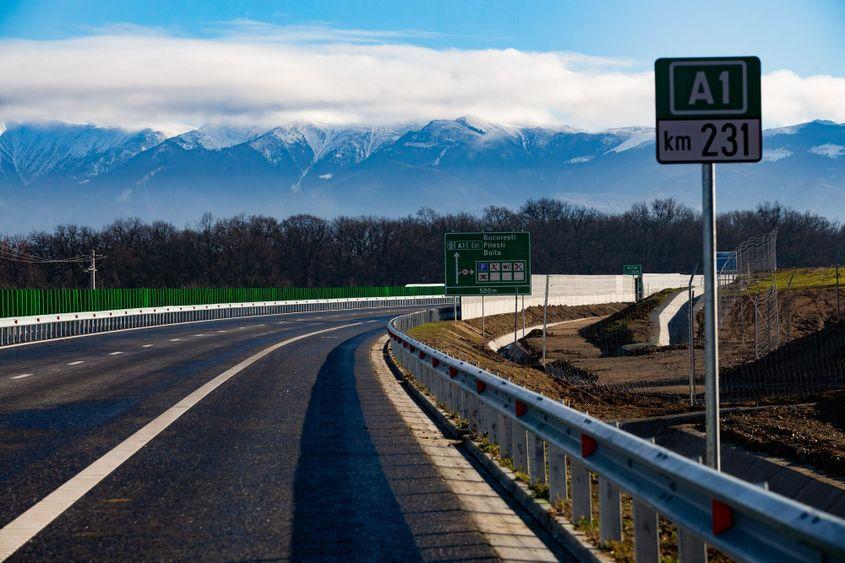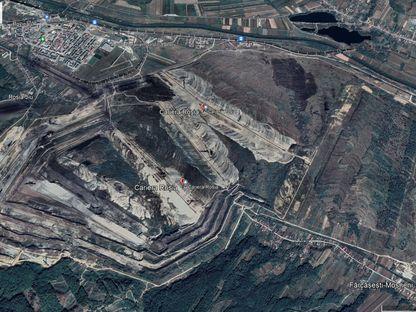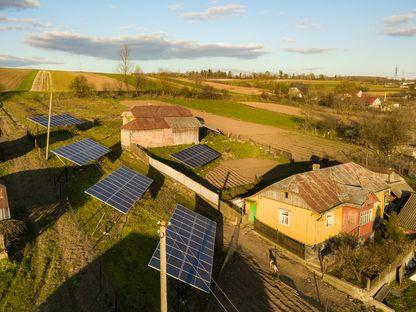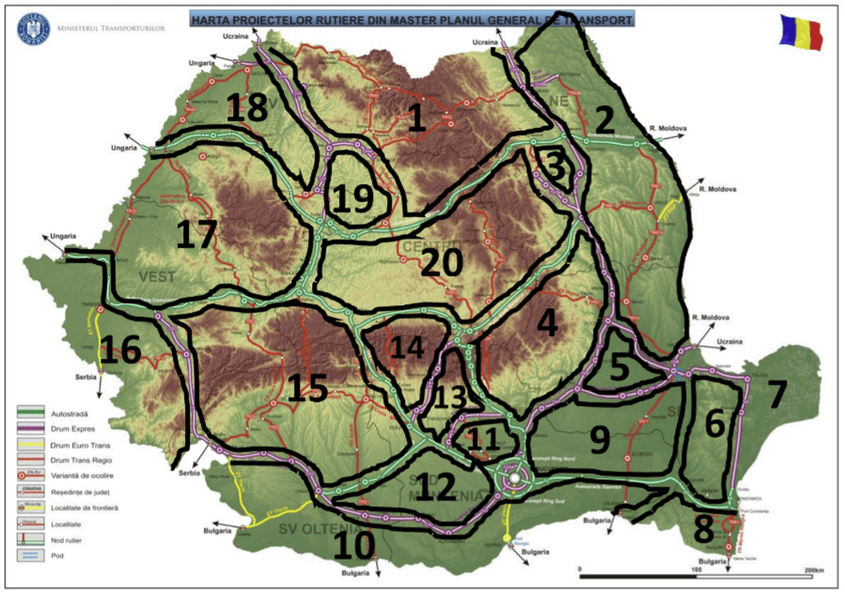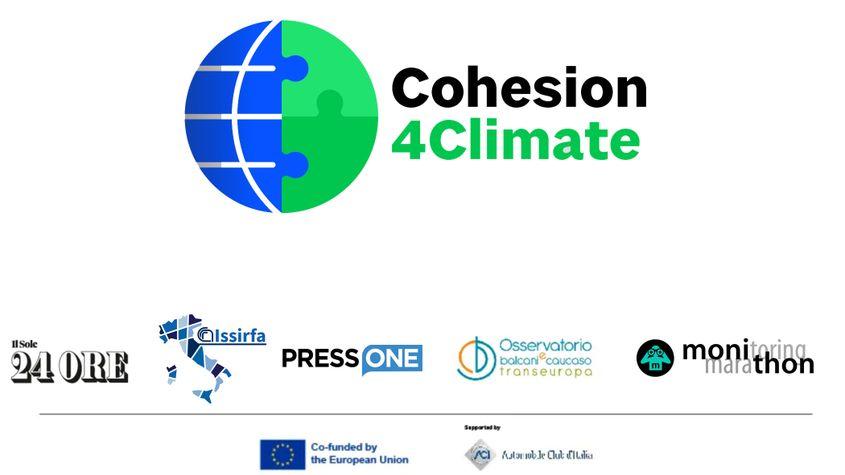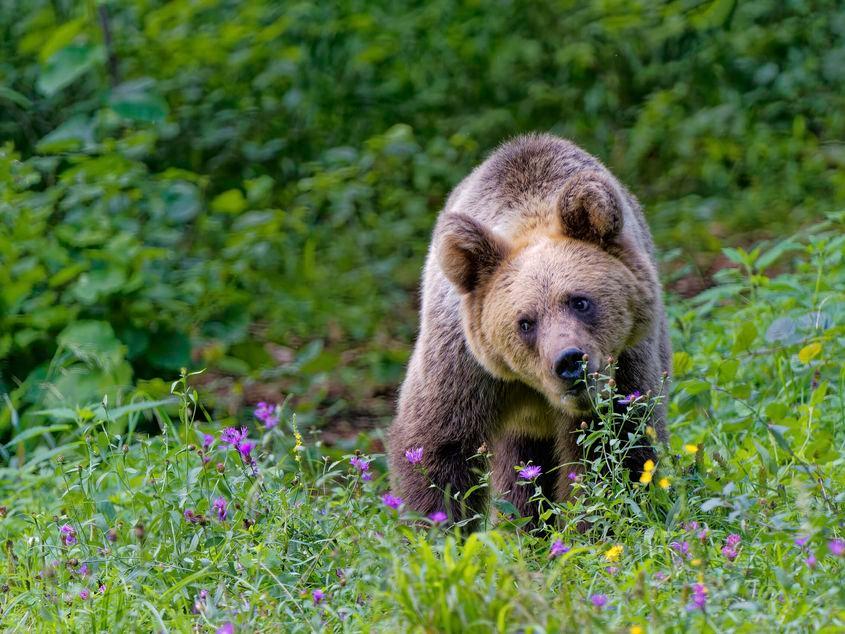
Photo: László Potozky
30/07/2025
Our roads, their borders. What is left unseen when we build a highway, what ecological corridors are, and why their absence affects both people and animals
In Romania, every new kilometer of a highway is a promise of speed, connectivity, and normality. But this progress often becomes a barrier for brown bears and other species.
Ecological corridors, which are passages meant to allow animals to cross safely, are, in theory, mandatory. In practice, however, they are ignored, undersized, or treated as just another checkbox in a multi-million-euro project, says Mihai Pop, a PhD in bear conservation, in an interview for PressOne.
As we rush to make up for decades of delay in highway construction, infrastructure inevitably intersects with nature. On paper, the projects sound promising: billions of euros in EU funding, deadlines, bidding, transport corridors. Romania benefits from generous European funding through programs like PNRR, CEF, TEN-T, and the Transport Program, and highways like the A1, A7, A8 or express roads like Craiova–Pitești or Brăila–Galați are supported by these funds.
EU funds come with nature protection obligations
European funds come not only with money but also with rules. To access these funds, projects must comply with environmental approvals that include mandatory wildlife crossing corridors: ecoducts, overpasses, passages.
How willing are authorities to combine the need for speed with the need to protect nature and habitats? Why is it vital to strike a balance between infrastructure development and the conservation of large species’ habitats? What happens with roads that are already completed, do they comply with European regulations? We asked Mihai Pop, a PhD in bear conservation.
Politicians don’t accept environmentalists at the table
PressOne: How should we understand the balance between infrastructure development and the conservation of large species’ habitats?
Mihai Pop: I, too, think about how useful highways are when I drive on them. I’m glad my habitat is connected. I don’t think it’s easy to start thinking about the negative implications of something that directly benefits you. But it’s important for those responsible for planning, design, construction, and maintenance to understand this.
Mulți ne citesc, puțini ne susțin. Fără ajutorul tău, nu putem continua să scriem astfel de articole. Cu doar 5 euro pe lună ne poți ajuta mai mult decât crezi și poți face diferența chiar acum!
If you want a well-built road, then you need engineers of all kinds, economists, lawyers, geologists, surveyors; but you also need ecologists and biologists who can ensure that the construction aspects are integrated into a given ecosystem and help identify specific issues that need to be addressed.
A road is not just a line on a map; once built, it becomes a small ecosystem within a larger one. It becomes part of the landscape, and it starts to alter the relationships between the elements of the ecosystem.
What’s most important is for politicians to understand that they don’t know everything, and that they shouldn’t interfere in the design process, whether by drawing lines themselves or by excluding stakeholders from the planning out of fear that the process will become more complicated.
It’s not acceptable to say that ecologists have no place in these discussions, because they are the ones who must integrate design solutions into a dynamic ecosystem—one that can directly affect the safe and proper use of the highway.
Frequent Design Compromises
Coal Mining Expansion Leads to Deforestation: Over 470 Hectares of Forest Cut Down in Gorj, Romania
Over the past six years, more than 470 hectares of national forest land have been allocated by the government, without compensation, to the Oltenia Energy Complex (CEO) for the expansion or opening of new coal mines.
The not-so-green Romania. The state delays settlements for photovoltaic panels by 2 years
PressOne reviews the main dysfunctions in the production, consumption and distribution of energy from renewable sources, as revealed by discussions with consumers and data provided by official sources at the request of our editorial office.
PressOne: Romania has one of the most fragmented infrastructures. What mistakes have you observed in the approach to infrastructure projects when it comes to protecting bears and other wild animals?
Mihai Pop: At a small scale, designers do follow certain standards, so the errors here are limited. The most frequent compromises are made regarding the width of the ecoduct or wildlife overpass. The rule generally is the wider it is, the better.
I think the biggest problem is that we focus on building ecoducts in bear habitats and don’t consider planning them in other areas as well. We imagine them as necessary only in forested zones, connecting two forest bodies, but in reality, they are needed in many more areas and for far more species, not just for bears.
And they are also necessary for our own safety.
Un newsletter pentru cititori curioși și inteligenți.
Sunt curios
Romania builds, but doesn’t monitor
PressOne: Regarding what has already been built, what data do we have about ecological corridors? How many have been built, how effective are they? Do we have monitoring systems in place to confirm that animals are using them?
Mihai Pop: Unrestricted movement of individuals from a species is essential for survival. This is true for us as a species too: just imagine what the Earth would look like today if Africa hadn’t been connected to Europe, or if continents had remained isolated from one another.
Nowadays, the main barriers are man-made, and linear infrastructure has the highest potential to restrict species movement.
Therefore, adopting measures to reduce habitat fragmentation is a strategic objective in wildlife conservation. But beyond that, it's also about ensuring our own safe travel on these high-speed roads.
For example, broadly speaking, U.S. highways were not designed with adequate fencing to keep animals off the road, nor with ecoducts or animal corridors. In 2020, it was estimated that there were nearly 2 million wildlife-vehicle collisions in the U.S., resulting in about 200 human deaths and around 10 billion dollars in material damages.
Analyses have shown that in areas where highways are more permeable—meaning there are bridges or tunnels not necessarily intended for wildlife—incident numbers are lower. In areas where ecoducts were intentionally built, the number is even lower. So, in the long term, investment in wildlife overpasses or underpasses is actually a cost-saving measure, not an expense.
The environmental studies for Pitești–Sibiu are among the best in Romania
PressOne: When it comes to projects currently underway, are international best practices being followed for animal protection, and specifically for bears?
Mihai Pop: As far as I know, construction hasn’t yet started in the central area of bear habitat along the Olt Valley. In my opinion, the environmental studies done for Pitești–Sibiu were among the best in Romania. Of course, things can always be improved, but what was designed there is now being used as a model in other projects.
Best practices, however, depend on many factors. There are still debates among researchers about the size, shape, and construction system of these animal passages. Some argue that overpasses are better; others claim that underpasses are ideal. Their quality is also influenced by geography.
It’s pointless to want to build an overpass if the terrain doesn’t allow it. So the most important thing is that these passages are adapted to the local relief and built where the species are actually present.
Simply put, beyond the construction elements, it’s important that animals perceive them as parts of their habitat, places where they can spend time without feeling threatened. From my point of view, customization is the key to a functional wildlife passage.
Problematic sections, critical zones
PressOne: Where are the problematic sections? What are the most critical areas in Romania where the lack or poor construction of ecological corridors directly affects bear populations?
Mihai Pop: Currently, I don’t think there are any major problematic sections yet, but there will be as infrastructure continues to expand. Once everything that’s planned (highways, express roads, high-speed rail) is built, Romania will be divided into around 20 „islands” that will be connected only through these green passages or ecoducts. Over the long and very long term, this will have a significant impact on biodiversity conservation planning and also on wildlife management.
Large species—like deer, bears, and wild boars—will likely be the most affected in the long term due to the reduction of gene flow from one „island” to another. Without proper management, the corridors/ecoducts will become trap zones: areas with quality habitats, but where mortality is still high.
That infamous but false ecological concept of an „optimal population size” will surely prove to be completely useless as a reference point for setting quotas. The greater impact, however, will be on the communities located near these barriers.
There will also be some positive aspects. We will have fewer animal-vehicle collisions on national roads. In certain areas where we currently face conflicts with bears and wild boars, their numbers will decrease.
Quality matters more than quantity
PressOne: What other such corridors/ecoducts should be built, and how should they be constructed so they don’t completely destroy animal habitats?
Mihai Pop: Some would say the more, the better. I believe it’s not the quantity that matters, but their quality. Of course, higher permeability is desirable, but once a certain level of permeability is achieved, any additional investment becomes an unnecessary cost.
The only place where we have long-term data on bear movement is in Mureș County, where the Milvus Group has invested resources and effort to identify sensitive areas for bears. That information reached the planners. In a well-functioning society, these studies would have been conducted by state institutions, not NGOs, and they would have been done in all the areas where linear infrastructure was being proposed.
When it comes to bear habitat, we need to acknowledge that it will never be what it once was. The Carpathians of Romania will never again be a compact, unified, lightly fragmented ecosystem that serves as a continuous refuge for carnivores. It will become an archipelago of wilderness islands. The smaller the island, the bigger the problems.
For example, Bucegi and Făgăraș are areas that already have a strong insular character, being surrounded by extensive infrastructure, towns, and roads with varying degrees of permeability. These are areas with many human-bear conflicts. This is the cost of development.
What’s really missing?
PressOne: In the context of highways, at least, financial resources exist. What exactly is missing for these projects to be truly functional and sustainable: political will, scientific understanding, a lack of awareness about the relationship between human and animal habitats, empathy?
Mihai Pop: An understanding of the phenomena and a genuine undertaking of responsibility. In the case of complex and still poorly understood ecological issues, or in the functioning of natural systems; eliminating the questions for which we don’t yet have answers to reduces everything to money and social acceptability.
Additionally, authorities lack either the capacity or the willingness to understand what a study based on science and properly implementation actually means. Selection still depends on how „colorful” the study looks. Two photos and three charts do not make a scientific study.
Who Truly Defends the Bears?
PressOne: Who can defend a bear’s right to its habitat, and how? Are there programs or initiatives of this kind, and if so, how are they received by government representatives?
Mihai Pop: At the moment, the right to habitat is supported by European legislation. However, when it comes to the bear, things are likely to change somewhat. Even Romania has expressed its intention to reduce the bear’s protection status and, by extension, the protection of its habitat.
As for the forest, bears’ main habitat, though not their only one, forestry legislation contributes somewhat to protecting habitat. The hunting law, within its limits, which frames the bear as a resource, touches on habitat issues here and there.
For government representatives, biodiversity is such a low priority. There have been—and still are—projects that promote connectivity and habitat conservation. They’ve been implemented by NGOs, universities, and public institutions. So, state representatives promote them to some extent, largely because they bring European money into the system.
How are these projects received? With great interest, until the project ends. After that, they’re often ignored: either because the solutions are too complex, or because they conflict with other legitimate interests, or simply because there’s always another pressing priority.
Another problem is that the wildlife management system is very conservative and doesn’t easily accept new methodologies or solutions that would require changes to parts of the system. That creates other forms of resistance.
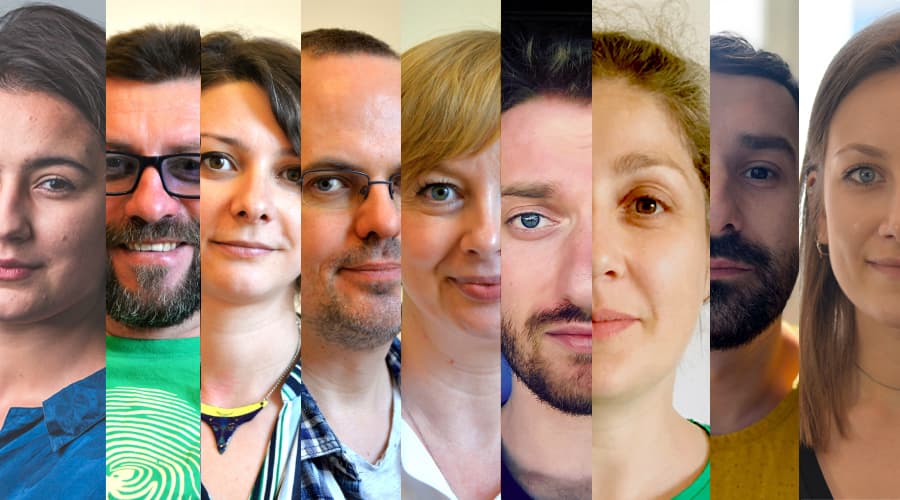
Avem nevoie de ajutorul tău!
Mulți ne citesc, puțini ne susțin. Asta e realitatea. Dar jurnalismul independent și de serviciu public nu se face cu aer, nici cu încurajări, și mai ales nici cu bani de la partide, politicieni sau industriile care creează dependență. Se face, în primul rând, cu bani de la cititori, adică de cei care sunt informați corect, cu mari eforturi, de puținii jurnaliști corecți care au mai rămas în România.
De aceea, este vital pentru noi să fim susținuți de cititorii noștri.
Dacă ne susții cu o sumă mică pe lună sau prin redirecționarea a 3.5% din impozitul tău pe venit, noi vom putea să-ți oferim în continuare jurnalism independent, onest, care merge în profunzime, să ne continuăm lupta contra corupției, plagiatelor, dezinformării, poluării, să facem reportaje imersive despre România reală și să scriem despre oamenii care o transformă în bine. Să dăm zgomotul la o parte și să-ți arătăm ce merită cu adevărat știut din ce se întâmplă în jur.
Ne poți ajuta chiar acum. Orice sumă contează, dar faptul că devii și rămâi abonat PressOne face toată diferența. Poți folosi direct caseta de mai jos sau accesa pagina Susține pentru alte modalități în care ne poți sprijini.
Vrei să ne ajuți? Orice sumă contează.
Share this


